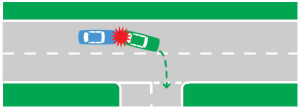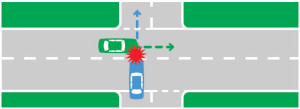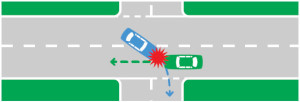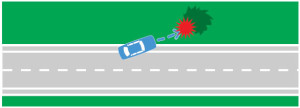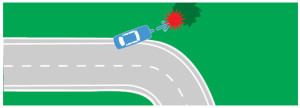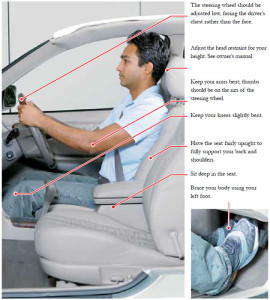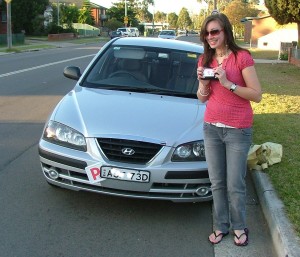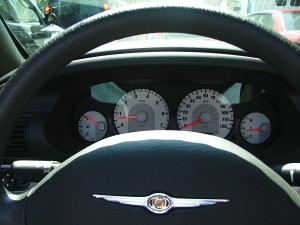What to do after a crash.
Changes to tow-away only crashes
As part of the NSW Police commitment to streamline processes for motorists, reduce danger to road users and manage crashes more efficiently, motorists involved in tow-away only collisions can organise their own tow and leave the area if no one is injured, all parties have exchanged particulars and no one is under the influence of drugs or alcohol.
However, the crash must later be reported to the Police Assistance Line on 131 444.
Drivers no longer need to report minor collisions which do not require a tow away, even for insurance purposes. For more information visit the NSW Police website.
What to do
You should protect the area to make sure that another crash does not occur.
You must remove anything that falls or escapes from crashed vehicles and which is likely to endanger the safety of others (for example, debris or broken glass). However, if you need to clear debris from the road, it is important that you ensure your personal safety at all times.
Following a crash:
Switch off the ignition of the immobilised vehicle to reduce the risk of fire.
Switch on hazard warning lights
The Police may attend and investigate crashes where:
A person is killed or injured
There is damage to property or animals
A person fails to stop or exchange information
A driver is believed to be under the influence of alcohol or drugs.
If police do not attend the crash scene, you must report the crash as soon as possible within 24 hours (unless in exceptional circumstances) where:
You are in a crash and either your vehicle or another vehicle needs to be towed away.
There is damage to property or injured animals.
You are unable to provide particulars to the owner.
You must always provide Police attending the crash scene with details of the crash, vehicles involved, your name, address and, if known, information about any witnesses or the drivers of other vehicles involved.
You must always show Police your driver licence.
Regardless of damage, if you are asked to, you must provide the owner or driver of any other vehicle involved in the crash with the following information:
Your name, address and licence details
Your vehicle registration number
If you are not the owner of the vehicle, the name and address of the owner.
You can ask the other driver(s) for similar information.
If your vehicle is involved in a crash, you should place a warning triangle 50 to 150 metres behind your vehicle to warn other road users.
It is recommended that you wear a reflective vest if you have one.
Crashes involving dangerous loads
If you are involved in a crash with a truck carrying a dangerous load:
Call the Police or Fire Brigade on 000.
Avoid touching spilled chemicals or breathing the fumes or dust.
Warn people away from the crash.
An emergency Procedures guide will be in a holder attached to the truck driver’s door. Follow these procedures if it is safe to do so.
First aid
First Aid is a skill which everyone should learn. For details on first aid courses contact St John Ambulance Association on 9212 1088, the Red Cross on 9229 4111 or the National Safety Council of Australia on 1800 424 012.
If you need a tow truck
If you need the assistance of a tow truck after being involved in an accident, you have the right to:
Decide where your vehicle will be towed.
Decide who will tow your vehicle
Contact anyone prior to signing the authorisation form (for assistance on the right place to tow your vehicle).
Receive a copy of the towing authorisation form.
See Tow trucks – consumer rights for more information.
As the owner/driver your main responsibility is to report the accident to police immediately and authorise the tow truck driver to tow your vehicle by signing a Towing Authorisation Form.
If you are unable to make such authorisation, a police officer or authorised officer will be able to organise the towing of your vehicle.
As the owner/driver, it is your responsibility to check and ensure that the tow truck driver has in their possession an accredited driver certificate.
A NSW based tow truck should have a number plate with four numbers and ending in ‘TT’. If the tow truck driver cannot produce an accredited driver certificate or they do not have an authorised tow vehicle, do not allow them to tow your vehicle.
If your vehicle is covered by a comprehensive insurance policy, the towing fee may be covered. Check with your insurance provider.

